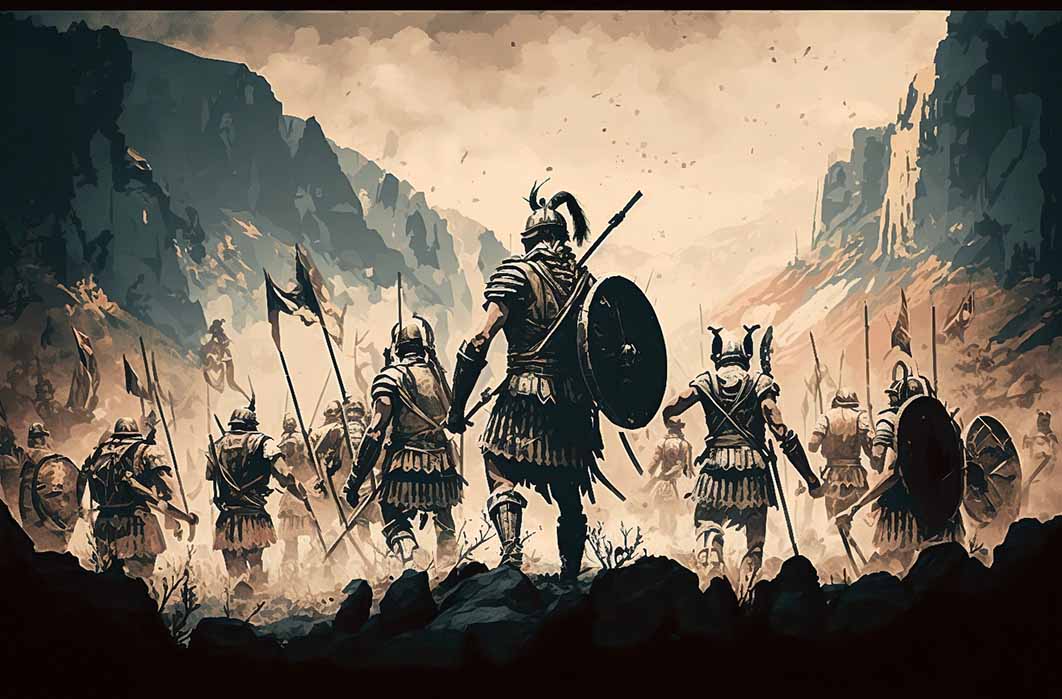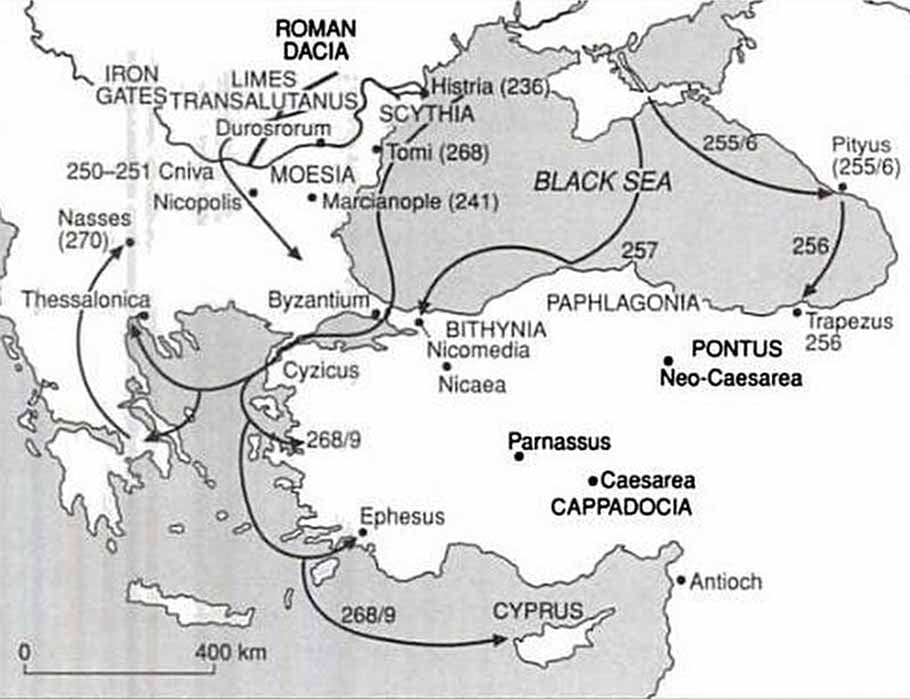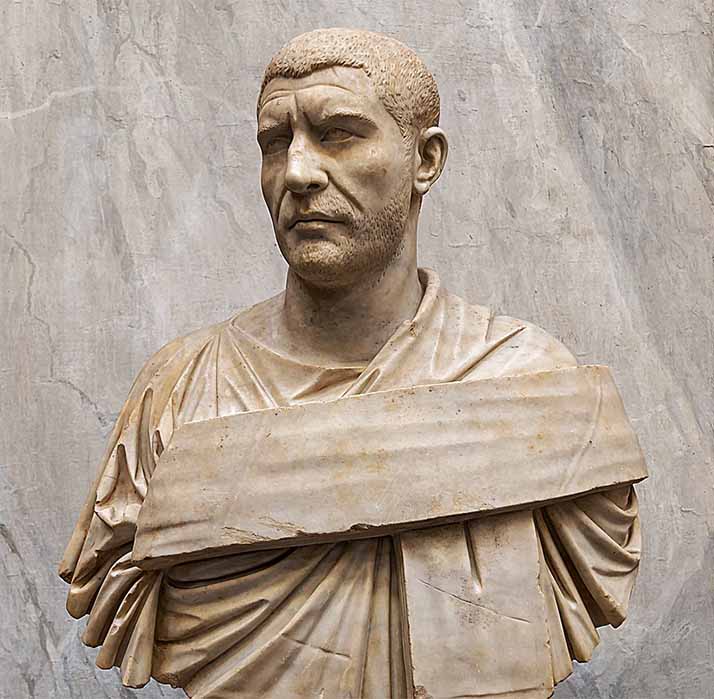
Goths On The Move: The Third Century Barbaricum Invasion of the Roman Empire
In 238 AD, after at least two generations with no mention of the Goths, denizens of the territories above the Roman province of Dacia (modern Romania), showed the first signs of a barbarian renaissance in the uprising. Ominously, as if from nowhere, hordes of savages began to mobilize south, further complicating an already complex political situation. Between 235 and 260 the Roman Empire was ruled, legitimately or illegitimately, by no more than 51 individuals in a period generally referred to as the Third Century Crisis. These decades of internal civil strife were closely intertwined with the lesser-known Gothic invasions.

Gothic invasions in the third century (Public Domain)
A Barbarian Renaissance
Following a lengthy period of quiet the Goths launched a devastating sortie into the Roman Empire in 238. The Empire’s inability to neutralize the barbarians between the Danube River and the Tisza River in the West, and its failure to secure the eastern border along the Prut River in the preceding years, was duly punished. The assailants plundered and pillaged the area south of the Danube mouth known as Histros-Histria in 236 before withdrawing, marking the start of a new and terrible Scythian War. Caught up in unexpected devastation, the Romans offered to pay an annual tribute to prevent further attacks.
The Roman tribute however, would cause unanticipated ripples of division to spread throughout the barbarian world. While the Goths would profit from this Roman concession, another rival tribe, the Carpians, described by the Origo Gothico as an “especially warlike people” would receive nothing. Their dominance challenged by the Goths, the Carpi thought it fit to respond with the words: “we are stronger than the Goths”. In fact, despite their strength, the Goths had not secured the greatest of deals. In 242 Goths could be found fighting alongside Roman soldiers in the armies of Roman Emperor Gordian III as he mounted a retaliatory campaign against the Persians, suggesting that another major condition of the agreement was the acceptance of barbarians into the military. No such treatise would apply to the Carpi, who between 238 and 248, angered that they had been sidelined by the Goths and eager to secure a lucrative accord for themselves, launched multiple sorties of their own into the eastern flanks of the Roman dominion.

Bust of the Roman emperor Phillip the Arab (244 - 249) Vatican Museums (CC BY-SA 4.0)
The Carpian invasions of 246 and 248 however were easily repelled by Gordian III’s successor Phillip the Arab, which is illustrated by the fact that coins were once again minted in the province in this period. Having comprehensively beaten the Carpi, Phillip decided to cease the annual payments to the Goths as an indication of the confidence he had in his ability to repulse barbarian invaders. Yet Phillip’s measure only provoked the ire of the Goths, and he would soon pay for his arrogance.

A marble statue of Emperor Decius dressed as Hercules (CC BY-SA 4.0)




